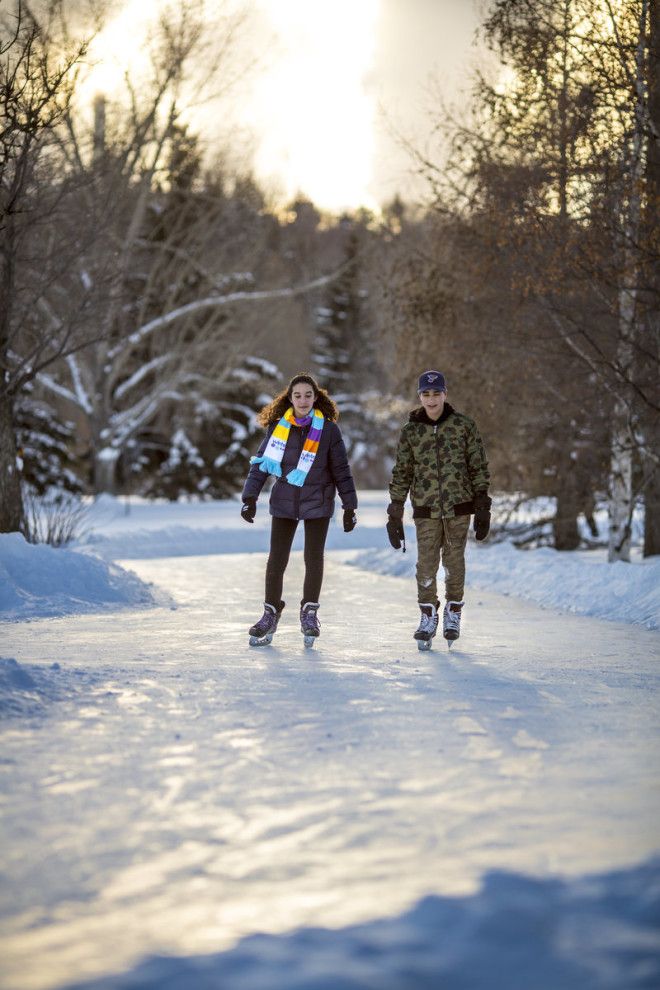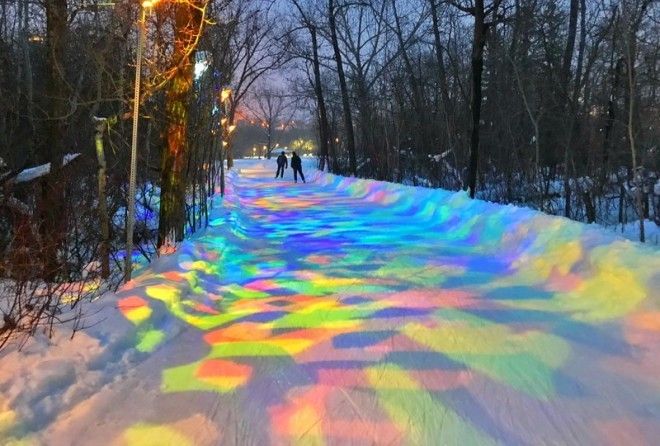To gear up for the season, the vehicle dumps between 60 and 80 truckfuls of water—enough to flood park trails and turn them into winding skating paths speckled with colorful light installations come nightfall. The result is ice up to 12 inches thick—and something akin to a giant, winding backyard ice rink for the entire city.

The skating trails are one way that Edmonton is facing facts: It’s cold. A few years ago, officials decided that, if locals were going to be shivering, they might as well make the best of it.
Cities in finger-numbing climes have a few options: They can accept that residents will hunker down inside, or encourage them to get outdoors despite it all. Winnipeg lures folks to artful (or wacky) warming huts; Montreal installed an interactive playground of light and sound. Edmonton has gone all in, too. A few years back, they piloted a WinterCity Strategy, including guides with tips on tobogganing, snowshoeing, and cross-country skiing, as well as how to safely keep cycling in subzero temperatures. “We can create more fun experiences that don’t force you to hide behind your four heated walls all winter,” the architect Matt Gibbs told Metro in 2015.

Gibbs dreamed up a version of the frozen trails concept as part of his master’s thesis in landscape architecture at the University of British Columbia. His idea, which he christened the “Freezeway,” involved even more frozen paths—enough glassy arteries that Edmontonians could strap on some blades and skate to work. That wasn’t quite feasible, but the city adapted the project, named it the “IceWay,” and has paved two frozen paths through parks. There’s a three-loop trail around Victoria Park, a one-and-a-quarter mile path through Rundle Park. The project is growing: Angie Blades, a project coordinator for the City of Edmonton, estimates that the Rundle Park route, which the city piloted last year, is 80 percent longer this season.

The trails demand daily upkeep, hence the trucks going about their freeze-friendly business. Starting around 5 a.m., staff sweep and plow the route, removing any dustings of snow that tumbled down overnight, and smoothing any shavings or grooves from the prior day’s skating. They then flood the route four or five times to freshen up the surface. It’s ready for skaters by 10 a.m.
The trails melt on their own come spring, says Blades. Until that thaw, residents just need a little push to get moving.

